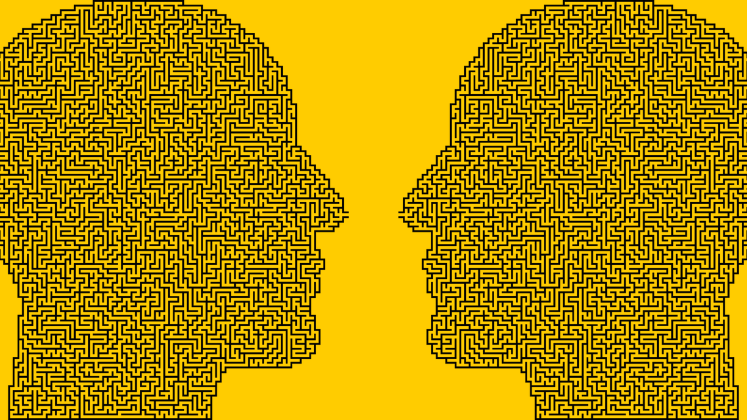Drawing on his ethnographic study of government science advisers, Noam Obermeister argues that much of their work involves learning by doing and that by creating realistic social simulations this expertise can be developed in the classroom.
Transformation – much like sustainability – has become a cliche. As a former teacher of mine used to say, they are tofu concepts: they take on the flavour we choose to give them. Transformation should instead evoke radical upheaval and metamorphosis – in other words, revolution not evolution. This was the meaning Jack Mezirow had in mind in his theory of transformative learning. He thought of transformation as protracted and painful. For him and his colleagues, mindset revolutions happen through critical self-reflection following disorienting events. In this view, individuals are consciously processing and reacting to new experiences. Transformative learning occurs when existing frames of reference cannot explain or account for these new experiences, and new frames must therefore be formed.
What does any of this have to do with using evidence in policy? Well, formal education, job descriptions, and terms of reference fall short of preparing scientists for the ups and (the many) downs of policy engagement. Despite an unspoken, collective acknowledgement that traditional pedagogy is inadequate, PowerPoint presentations and seminars for early-career researchers continue to be the norm in policy literacy education and training across the UK and abroad. There are nonetheless a few important exceptions, most notably the various policy internship and placement initiatives such as the UKRI Policy Internships scheme for PhD students. Underlying these internships is an assumption that the most effective strategy for capacity building is learning on the job. The hypothesis is that through day-to-day, immersive experiences in the policy world, researchers’ understanding of how policy works can be systematically fine-tuned – or literally transformed – to better match the reality on the ground.
formal education, job descriptions, and terms of reference fall short of preparing scientists for the ups and (the many) downs of policy engagement
This was precisely the hypothesis that was analysed and substantiated in my doctoral research on the learning journeys of science advisers in the UK. Through interviews, ethnography, diaries, and a simulation exercise, I found that science advisers’ learning is indeed largely tacit (i.e. implicit), experiential, and situated. In fact, adult learning in the workplace has been understood as such for decades. In practice, situated learning, means that individuals are learning by observing and participating in communities of practice. Over time, newcomers become more proficient, embrace the work culture, become an active part of it, and eventually contribute to its reproduction. It was through the many allusions my research participants made to cultural differences between science (academia) and policy (government) that I began to understand just how important these cultural aspects of learning are. For instance, one interviewee initially assumed that academics were culturally and socially closely aligned to civil servants, only to later realise that they are in fact much more like politicians – explaining that whilst civil servants would generally not seek personal recognition for a particular piece of work, this would be unimaginable for an academic.
I found that science advisers’ learning is indeed largely tacit (i.e. implicit), experiential, and situated.
If we take C. P. Snow’s classic metaphor of the Two Cultures and apply it to the context of science policy, a few productive insights emerge. Firstly, we can begin to understand why behaviours such as the linear model of science policy are so enduring. This is the belief that effectively communicated science can galvanise political action and lead to better decision-making. In the linear model, scientists see their job as making evidence available and digestible; the rest is up to the users of that knowledge. Through a cultural lens, it is abundantly clear that this model closely replicates the norms and reward systems of an academic culture focused on publishing and dissemination, as opposed to engagement. Academics replicate the model they know and “grew up” with.
Secondly, the well-known processes of acculturation (i.e. changes caused by the meeting of two or more cultures) and enculturation (i.e. adaptations to the norms and values of a given culture) can also describe what is happening in the elusive space that sits between the worlds of science and policy. Learning can hence be conceived as an exercise in revisiting expectations and presuppositions of how the unfamiliar culture operates – which leads me to my final point. The cultural metaphor recasts transformative learning as culture shock: the more the cultural traits science advisers encounter are antithetical to their own, the greater the chances of transformative learning. The most reflexive science advisers I interviewed also displayed high levels of empathy and adaptability, suggesting a link between these character traits and the propensity for learning.
the more the cultural traits science advisers encounter are antithetical to their own, the greater the chances of transformative learning
Now, what if I told you that you don’t need to leave the university, to experience and learn – in just a few hours – some of the same lessons as the most seasoned science advisers? As part of my PhD, I ran a pilot exercise with early-career researchers. The logic was simple: if learning in science policy is largely tacit and experiential, then simulating real-world situations could yield interesting results. Based on my observations of Defra’s Science Advisory Council, I devised a fictional scenario and hand-picked a small, multidisciplinary group of volunteers. I took on the role of Chair and emulated some of the behaviours observed in Defra SAC. Through roleplay, we engaged in a fervent discussion about how to advise the government on its R&D spending. In the debriefing that followed, I struggled to keep my cool; I was gobsmacked by the number of key lessons participants shared with the group that precisely echoed what I had heard in my interviews with very experienced science advisers (including former Chief Scientific Advisers). All from an hour simulating a scientific advisory committee.
Fast forward a few months, and I now work with the Centre for Systems Solutions. For years, they had been developing social simulations with the explicit goal of bridging science and policy. I’ve now worked with them on a number of simulations: on the future of food, climate and Arctic security challenges, the future of the EU labour market in the mobility transition, and more. These social simulations are designed to include diverse real-world perspectives and discourses (i.e. shared ways of apprehending the world), and to encourage empathy through roleplay – representing the challenges that decision-makers and their advisers face in navigating the complexity of policymaking.
In the debriefing that followed, I struggled to keep my cool; I was gobsmacked by the number of key lessons participants shared with the group that precisely echoed what I had heard in my interviews with very experienced science advisers
When social simulations are used for educational purposes, the idea – as I see it – is to bring this culture shock into a controlled and safe environment and transform mindsets as a result. And that is precisely what I tried to do in the Climate Science Crisis Simulation. The simulation was commissioned by the PERITIA project on trust in expertise. The brief was to translate research insights on (dis)trust in experts into a scenario with tangible links to policy. The result of our co-design process was a fictional story of a rogue solar geoengineering operation sparking disinformation and a massive crisis of trust. The twelve unique roles were designed based on rhetorical archetypes – ‘the stock characters of public discourse’, as Doug Cloud puts it – with each role presenting a different interpretation of the crisis and preferred solutions. The simulation brings to life the plurality and ambiguities ever present in virtually all multidisciplinary and multi-stakeholder science policy forums.
There’s no hiding that I am enthusiastic and proud of the work we do, but the main point I want to make is that the general approach of simulation and play is so powerful that half the pedagogical work is done the moment you decide to use it. The simulations we make are a drop in the ocean of possibilities and untapped potential of these methods for building science for policy competencies. Next time you or a colleague think(s) about designing a course or training on science policy, ditch the slides and speaker invitations. Instead, start thinking about designing your own simulation exercise or choose an existing one. With good design and execution, you’ll witness a transformation unfold before you.
The content generated on this blog is for information purposes only. This Article gives the views and opinions of the authors and does not reflect the views and opinions of the Impact of Social Science blog (the blog), nor of the London School of Economics and Political Science. Please review our comments policy if you have any concerns on posting a comment below.
Image Credit: dajingjing on Shutterstock







